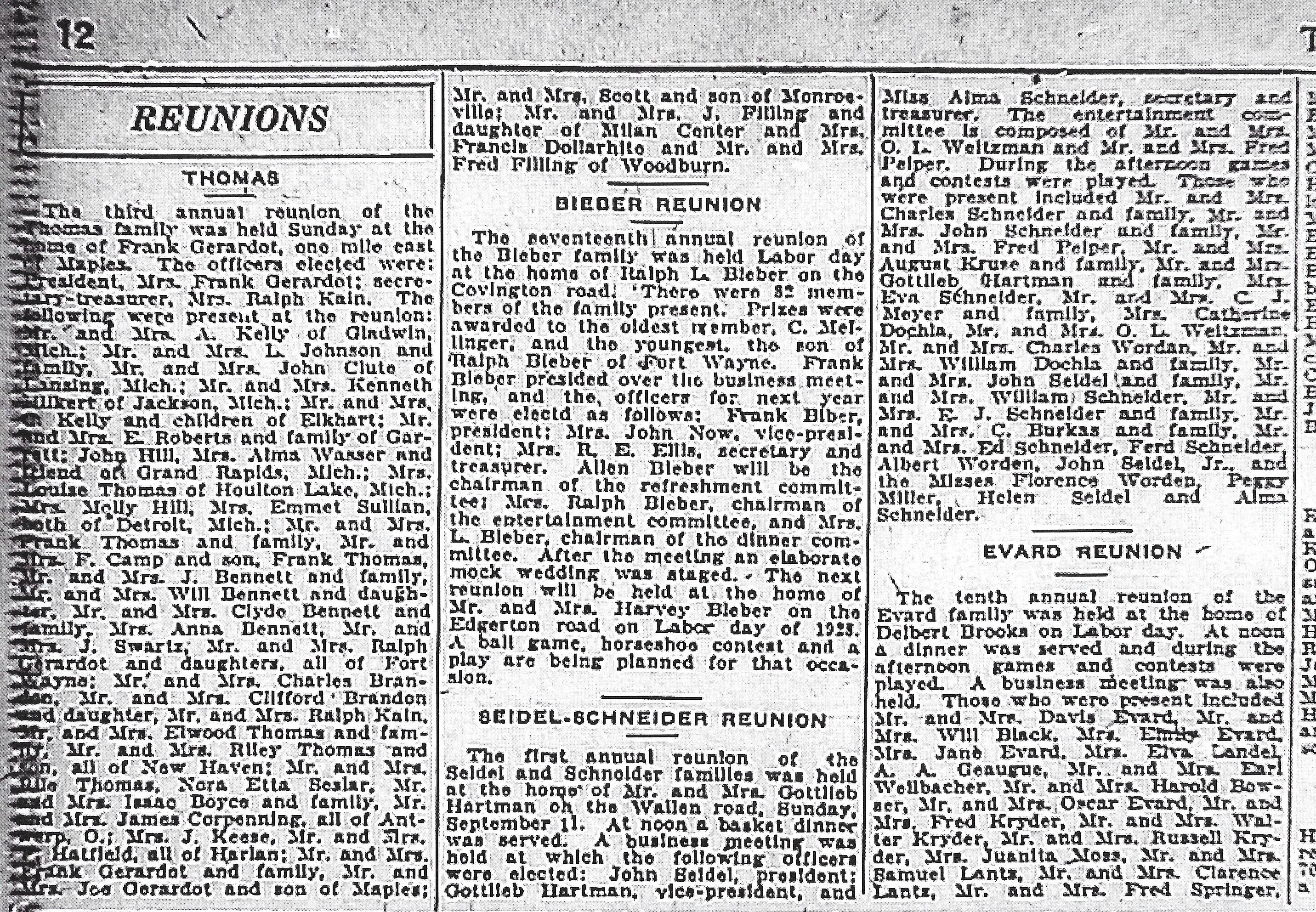The Trenton Strain of Racing Homer The Origins of the Trenton Strain about homing pigeons on CircusLofts discussed September 4, 2023 on Facebook.
History of the Trentons
Source of the following information was obtained from the ATB website.
What follows is a reproduction of an article published by the late Otto Meyer about 1980 which gives a little background on the Trentons and the ATB.
American Trenton Breeders
------------------------------
by Otto Meyer, Publicity
Rt. No. 1. Box 331-B
Madison Heights. Va. 24572
The original purpose of the American Trenton Breeders was to promote and perpetuate the Trenton Strain of racing pigeons. When the ATB was organized 23 years ago, there were only a very few fanciers who had any Trentons, and the strain had almost disappeared. Today there are several hundred fanciers who have at least a few Trentons and some of the members have nothing but Trentons. This was one of the greatest strains of pigeons ever in America. Never in the history of pigeon racing has any strain won as many races as was won by the Trentons. This was during the early part of the nineteen hundreds and this winning trend went on for a period of about 25 years. The Trentons made more world records at the long distances (1000 miles and further) than all other strains combined. These records were printed in this publication about two and a half years ago.
Anyone who is interested in becoming a member of the ATB is welcome to join. You are not required to have Trentons to participate in the activities of the organization. The ATB has encouraged many things to improve our pigeon society. For a long time a national trophy was awarded each year to the owner of a 600 mile bird with the fastest speed. A national trophy was also awarded for the fastest speed at 500 miles. Then came the 1000 mile classics for which Harold L. Driver was primarily instrumental in establishing. Eventually these races may become the National Classics of America.
Milton E. Haffner of Fort Wayne, Indiana is recognized as one of the best 1000 mile racing pigeon experts in the United States.In November 1979 he was the guest speaker at the Washington State R.P. Organization Convention. He has permitted me to quote all or any part of his presentation. I am happy to quote the following parts that will be of special interest to fanciers who wish to fly some of their birds in the 1000 mile classics:
"The Fort Wayne Racing Pigeon Club has been in existence and has had young bird series and old bird series since 1887 or for 92 years. Around the turn of the century. four or five of the local fanciers ordered direct from Conrad Mahr four or five pair of his Trentons. It was from these Trentons blended with Grooters that the Fort Wayne fanciers started making long distance records, some of which still stand today. During the period from 1905 thru 1930 the Fort Wayne flyers were flying 2 and 3 1000 mile old bird races and a 1000 mile young bird race, it definitely required a different type of bird than the Sprinters and Speedsters in short races where money is the big factor. It required then and still does today, a bird that comes home on his own initiative and determination to get home.
Oscar Anderson is the oldest living flyer in Fort Wayne. He is 92 years old and up until a year ago. could tell all about his flying with the Old Timers in 1902 and 1903. It is rare in a 1000 mile race that two birds will come together. The 1000 mile world record established in Fort Wayne was by Dr. Schilling's Blue Checker Trenton, named Hagen, who made the flight in 2 days, 3 hours, and, some minutes from Abilene, Texas. Needless to say, the publicity his bird got only gave the local boys something to shoot for as they all wanted to beat Hagen's world record. In 1910 Hagen's record was beaten by a Red Slate Trenton cock flown by Henry Beach. He called his bird 'Abilene'. Henry Beach's bird made the 1000 mile flight in 2 days, 2 hours and some minutes. Needless to say, Abilene's performance gained a lot of national publicity in pigeon circles.
Henry Beach sold many Trentons and many prominent flyers obtained their first Trentons from Beach. Among the well known flyers of today who obtained birds from Beach are Otto Meyer and Art Nemechek.
Three years later on July 11, 1913, a Blue Checker Trenton-Grooter cross hen named 'Bullet' homed in Fort Wayne from Abilene, Texas, 1000 miles late in the afternoon of the 2nd day to the loft of Oscar Anderson, whom I referred to before. Only a died in the wool pigeon fancier can dream of the pleasure young Oscar had when his 'Bullet' made the world record in 1 day. 11 hours, and 24 minutes, and 6 seconds making a speed of 1042.54 yards per minute. This was not the first good performance for 'Bullet' as she had previously flown 500 miles same day two different times. I might add that Oscar disposed of his last pigeons in May 1979. He said at 92 it was too hard for him to get up into his second story loft in his barn.
In 1927, the 24th of June, Bullet's record was broken by "Wayne Jr." another full Trenton bred and flown in Fort Wayne by the late C.W. Oetting and to the best of my knowledge this record still stands for a club sponsored race from 1000 miles. Wayne Jr. flew 1005 miles to his home loft in I day, 10 hours, 22 minutes and 20 seconds, with a speed of 1122.43 ypm. Wayne Jr. was bred down from the Mahr Bright Eye Trenton strain. Mr.Oetting sold quite a few birds in the 30's and 40's and I am sure some of his blood lines exist in many lofts around the country.
Not long after Oetting's record, the Depression of the early 30's came. Hard times followed & the local club had difficulty in keeping its ranks together as everyone was pinched for finances. Then the unforgetable war years from 1941 thru 1945. During the period 1931 till 1945, pigeon racing all over was at a low ebb. Only short races were flown and rarely a 1000 mile race.
Around 1948 as an admirer of the 1000 mile performances, I started promoting a 1000 mile race again and it was not until 1953 that our club started flying the 1000 miles again. and with the exception of a few years. it has been scheduled as an annual race.
In 1958 on Thursday, July 3rd our race birds were released at 7 AM Fort Wayne time. Friday the 4th of July, was a holiday and of course, in as much as the weather was favorable. I did a lot of looking for a bird. Saturday morning I had to go to work till 12 o'clock noon. When I returned home at 12:15 my wife nonchalantly told me she clocked a bird around 10 o'clock. I went into the loft and it was the bird I later called 'Abilene Jr.' He had flown the distance in 2 days, 2 hours and 58 minutes. 'Abilene Jr.' was then put into the Golden Cage and used for breeding only.
In 1960. two years after Abilene Jr. made the good time. a bird I later called 'Ditto'. a full brother to Abilene Jr flew from the same 1000 mile station in 2 days. 4 hours. and 59 minutes. 'Ditto' won this race by a full 24 hours to the next bird home in the club, which was my bird called 'Spotty'. Spotty flew from the 1000 mile station a total of five times. During the period from 1958 till 1968, we had birds home almost every year on the 3rd and 4th day.
In 1977, we participated in the 1000 mile race from Houston, Texas. This race has been known as the Atlantic Coast Thousand. We are over the 1000 mile dis- tance so we participated in 1977 and 1978. Lofts from North Carolina, South Carolina. Virginia. Maryland, Ohio, Michigan, and Indiana participated. Approximately 35 lofts with 105 to 140 birds were entered in this event. In 1977, Fort Wayne birds won 2nd and 3rd and in 1978 we won 1st and 3rd. The same 3 birds that in 1977 won 1st 2nd and 3rd came in 1st 2nd and 3rd in 1978 only in a different order. Is it coincidence, or does this tell us that some birds will come from the 1000 and some just won't? In the last 18 years, I have shipped a total of 66 birds to 1000 mile race stations and of this total of 66 birds. 48 have returned home. This is quite a good return home percentage.
My family of birds which I call my Abilenes are a four way cross - the old Fort Wayne Trentons, Grooters, Bastins and Bricoux which I myself brought into Fort Wayne. I found back in the late 40's that this four way cross gave me everything I wanted in the way of good type and smart birds.
I do admire long and wide flight feathers which is a characteristic of my birds. I do not like to ship a bird to the 1000 mile station until it has been to the 500 and 600, which means it must be in its 4th year of flying. I do not like to send yearlings to the 500 or 600. only to 275 miles. Then the 3rd year to 500 and 600.
Now, how do I prepare the bird for a 1000 mile flight? The year that I intend to ship the bird to the 1000 mile race, I only enter it in the first 100 mile race of the season. Then for about three weeks before the 1000. I try to get the bird or birds to 50 miles about 3 times a week. and feed them quite heavy so they have good body.
I like a cock bird on a 10 day old youngster and a hen on eggs about 12 to 14 days. I have had much better results with the cocks at 1000 than the hens.
Here in the United States, popularity of a 1000 mile race seems to be gaining. More and newer clubs are sponsoring a 1000 mile race each year. In European countries a 1000 mile race is rare. There have been so many wonderful performances by fanciers in this country with birds of the Trenton background, I cannot but help think this All American strain should get more credit. They definitely have a stronger homing instinct and will work home from some of these SMASH races all clubs seem to be experiencing today."
I respectfully thank my good friend and ATB member, Milton E. Haffner for per mitting me to quote the above information. Many fanciers will be happy to broaden their knowledge on the 1000 mile flights to better prepare them for the American Classics.
The Trenton book, "I Kept Them Flying" by Conrad A. Mahr is being reprinted for the 4th time. It seems to be the best seller of all books.

